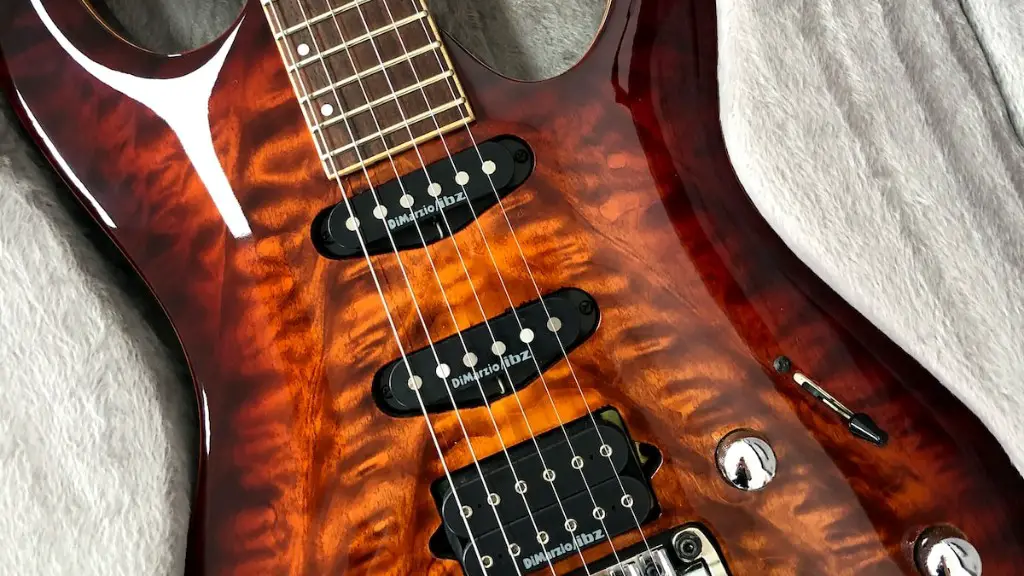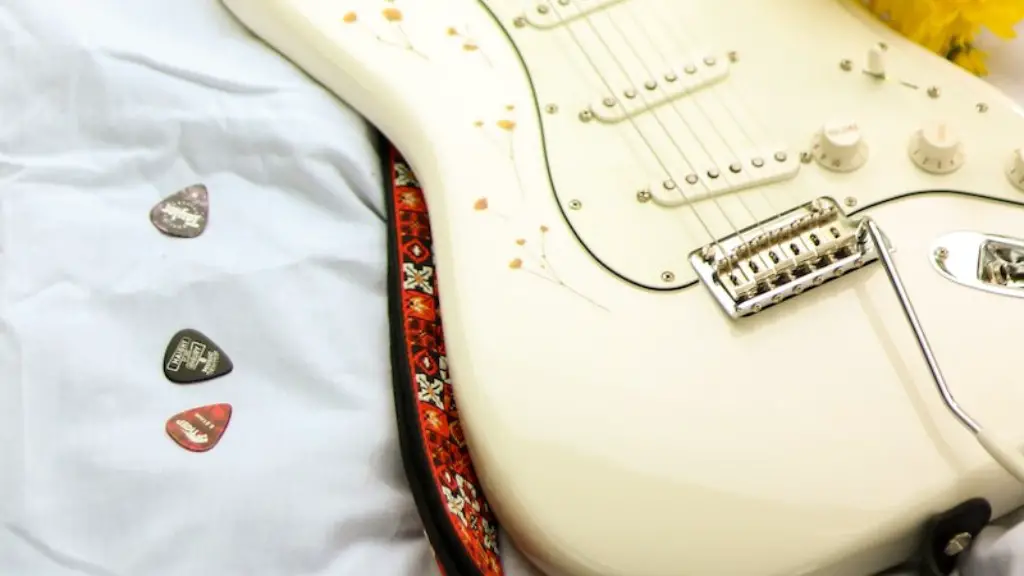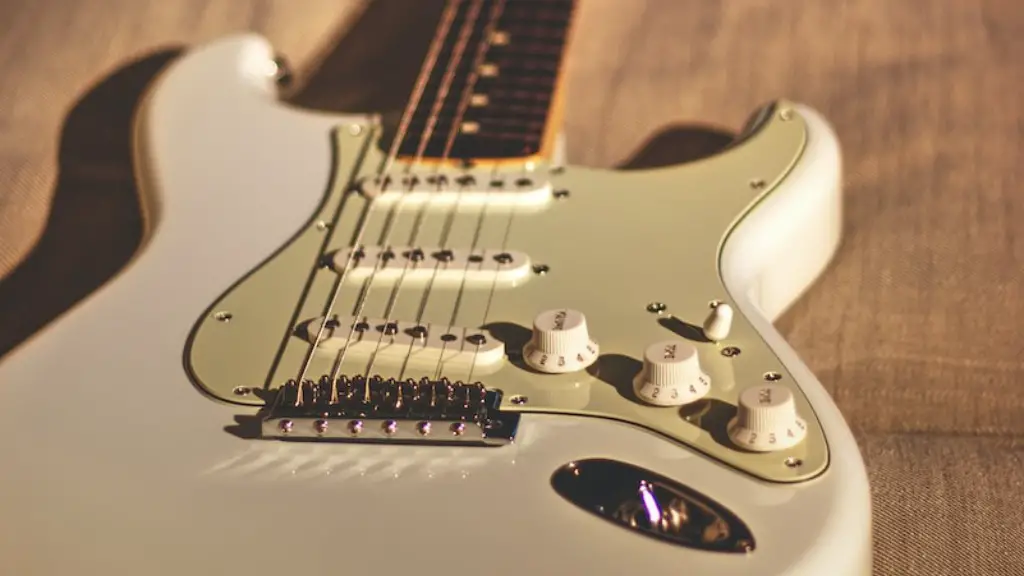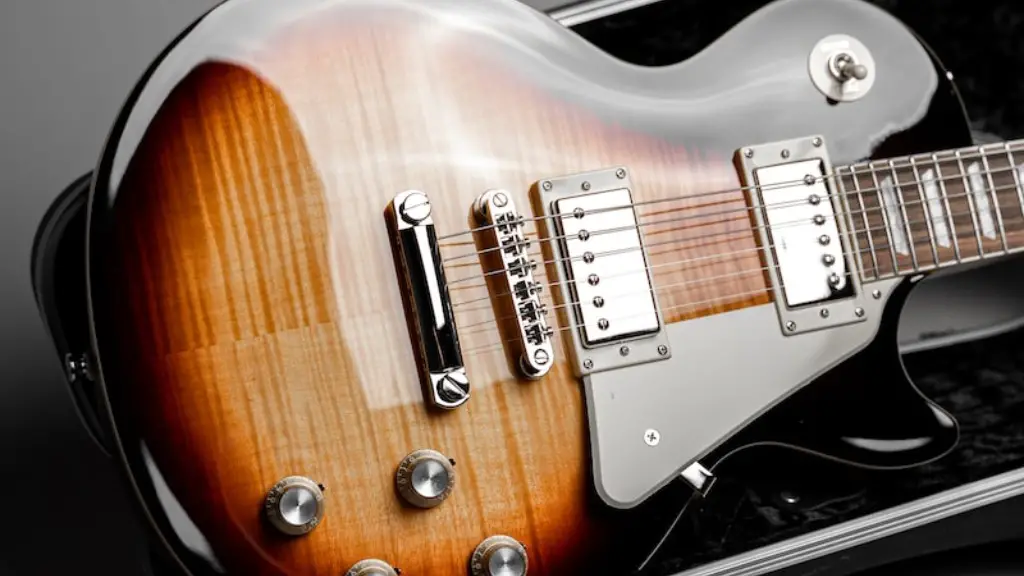The electric guitar is an instrument that has revolutionized the world of music. But who first invented the electric guitar?
The first electric guitar was created in 1931 by George Beauchamp and Adolph Rickenbacker. Beauchamp was a lap-steel guitarist who wanted to create an instrument that could be amplified in order to compete with the louder instruments of the time. He teamed up with Rickenbacker, an engineer and lap-steel player, and together they developed the first electric guitar.
The two men patented their invention in 1937, and began producing them commercially. The first model was called the “Frying Pan” due to its circular shape. It had a single coil pickup and a steel neck with adjustable frets. This design would become the blueprint for most future electric guitars.
The invention of the electric guitar changed the course of music history, allowing musicians to create new sounds and musical styles that were not possible before. It has become one of the most iconic instruments in modern music, and it all started with George Beauchamp and Adolph Rickenbacker’s invention in 1931.
History of the Electric Guitar
The electric guitar is a widely popular instrument, but its history is relatively short. The first electric guitar was invented in 1931 by George Beauchamp and Adolph Rickenbacker. The guitar’s design was based on a combination of Beauchamp’s ideas and an acoustic guitar body. The original electric guitar was made of metal with a steel-string neck and had a pickup mounted to it. This pickup was connected to an amplifier, allowing the instrument to be heard across larger distances than an acoustic guitar could be heard.
Since its invention, the electric guitar has evolved and become more popular over time. New pickup designs, construction materials, and electronics have all been developed to give the instrument more power and versatility. Today, there are many different types of electric guitars available, from hollow-body jazz guitars to solid-body rock guitars. Different styles of playing have also been developed, from blues and jazz to heavy metal.
The electric guitar has become an important part of musical history and culture around the world. It continues to be used in many genres today and is widely enjoyed by musicians and fans alike.
Adolph Rickenbacker – Father of the Electric Guitar
Adolph Rickenbacker is widely recognized as the father of the electric guitar. He invented the first successful electric guitar in 1931, which was a major breakthrough in the music industry. The instrument was revolutionary, allowing musicians to play louder and with more clarity than ever before.
Rickenbacker’s invention changed the way music was heard and performed around the world. His electric guitar quickly became popular, and it can be found in many genres of music today. He crafted his own pickups for his guitars, which allowed him to control their sound and make them even more powerful.
The impact of Rickenbacker’s invention cannot be understated. The electric guitar has revolutionized rock ‘n’ roll as we know it and has become an essential part of modern music culture. Adolph Rickenbacker’s legacy lives on through his guitars, which are still played and admired by musicians today.
His commitment to innovation and excellence continues to inspire musicians all around the world, making him a true pioneer in the music industry.
Innovations Leading to the Invention of the Electric Guitar
The electric guitar has evolved significantly since its invention in 1931. The earliest precursors to the modern electric guitar were developed in the late 1800s, when steel-string guitars and Hawaiian lap steel guitars were popular. Innovations such as pickups and amplifiers paved the way for electrical amplification of guitars, ultimately leading to the invention of an electric guitar in 1931 by George Beauchamp and Adolph Rickenbacker.
The first electric guitar was fitted with a single electromagnetic pickup and had a hollow body made out of Bakelite. This revolutionary instrument allowed players to amplify their sound without feedback or distortion. The development of this new technology was followed by further innovations that improved its sound quality and playability, such as the introduction of multiple pickups and adjustable bridges. These advancements eventually led to the creation of more advanced models, such as solid-body electric guitars, which are still widely used today.
Les Paul’s Contribution to the Invention of the Electric Guitar
Les Paul is widely credited for his monumental contribution to the invention of the electric guitar. It all began in 1931 when Paul, an avid tinkerer, started experimenting with amplifying acoustic guitars. He had a vision to create a louder and more versatile instrument that would enable him to experiment with new sounds and techniques. By 1941, he had created “The Log” – a 4×4 piece of wood with an electromagnetic pickup attached – which was the first solid-body electric guitar ever designed.
Paul’s design was revolutionary, as it allowed musicians to amplify their sound and play in larger venues or studios. The popularity of his invention quickly spread, inspiring other innovators and manufacturers such as Gibson and Fender to start producing their own versions of electric guitars. Les Paul’s influence on the music industry is undeniable; he is widely considered one of the most important figures in rock ‘n’ roll history. His legacy lives on through his inventive spirit and bold contributions to music technology.
Electric Guitar Invention
The electric guitar was first invented in the 1930s by George Beauchamp and Adolph Rickenbacker. Beauchamp developed magnetic pickups for the guitar, allowing it to be amplified and heard through a loudspeaker. The first commercially successful electric guitar, the Frying Pan, was created by Rickenbacker in 1931. This model featured six strings, each attached to a metal pickup that converted string vibrations into electrical signals. The signals were then sent to an amplifier and speaker system, creating a louder sound than traditional acoustic guitars. The invention of these pickups and amplifiers revolutionized the music industry.
Today, electric guitars are widely used in many genres of music including rock, jazz, blues, and pop. They are often played with other instruments such as drums and keyboards to create a fuller sound. Electric guitars come in many shapes and sizes, ranging from small beginner models to custom-made ones with intricate designs. Many famous musicians have used electric guitars throughout their careers including Jimi Hendrix, Eric Clapton, Dave Grohl, and Eddie Van Halen.
Adolph Rickenbacker’s Early Guitars
Adolph Rickenbacker was an inventor and entrepreneur who was the first to create an electric guitar in 1931. He created a number of prototypes for his guitars, which featured electric pickups made from magnets and coils, as well as a hollow body. His inventions helped revolutionize music, as they allowed musicians to play amplified sounds without using external microphones or amplifiers.
Rickenbacker’s early guitars were made from wood and had a semi-acoustic design. He developed the pickup himself, relying on his knowledge of electricity and magnetism from his days working in the auto industry. The pickup allowed for a consistent sound when amplified and gave players more control over their sound. He also added knobs to control volume and tone, which were important features that helped make his guitars popular with musicians.
Rickenbacker’s invention of the electric guitar changed the way music was played and created new opportunities for musicians to explore different genres of music. His guitars are still admired today for their timeless design and quality craftsmanship. They remain some of the most sought-after instruments on the market.
In Conclusion
The electric guitar has been an integral part of popular music since its invention in the 1930s. The first electric guitar was created by George Beauchamp and Adolph Rickenbacker in 1931. It was an innovative design that used steel strings and electrical amplification to create a louder, more powerful sound than traditional acoustic guitars. This new instrument revolutionized the music industry and is still beloved today.
The development of the electric guitar has continued over the years, with many famous musicians contributing to its evolution. From Chuck Berry and Jimi Hendrix to Eddie Van Halen and beyond, the electric guitar has been used to create some of the most iconic music of all time.
Today, the electric guitar is one of the most popular instruments in the world. It is used in a variety of musical genres, from rock and metal to jazz and blues. Its versatility and power make it an essential part of any musician’s arsenal.
To sum it all up, George Beauchamp and Adolph Rickenbacker can be credited with inventing the first electric guitar in 1931. Their revolutionary design paved the way for modern music as we know it today.
The End





